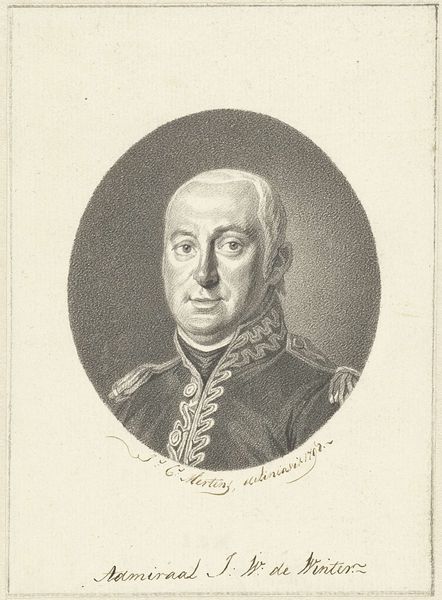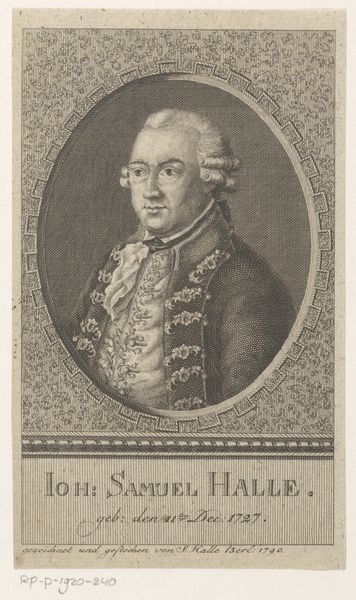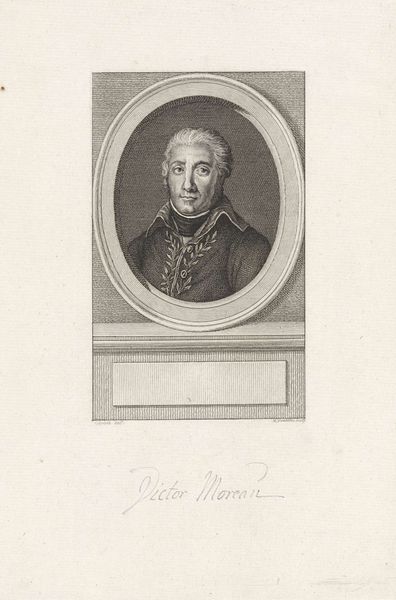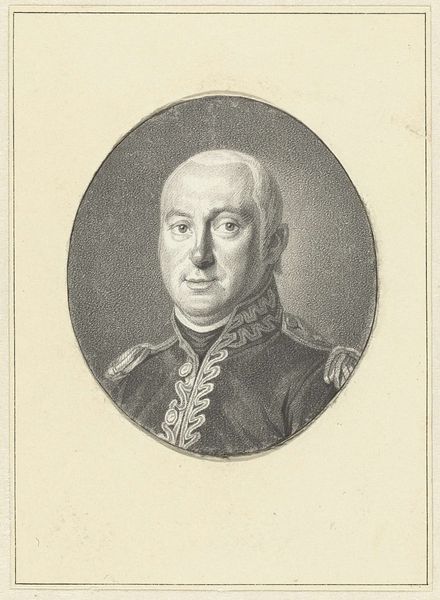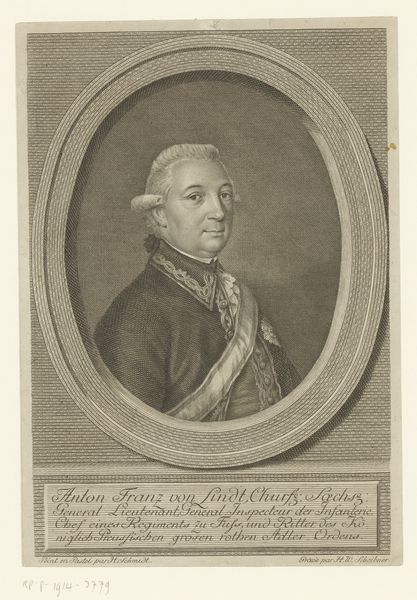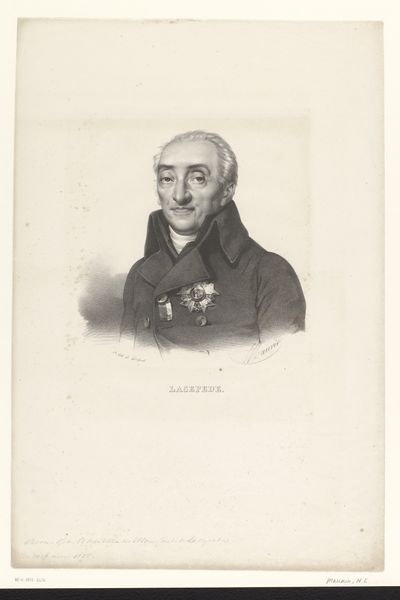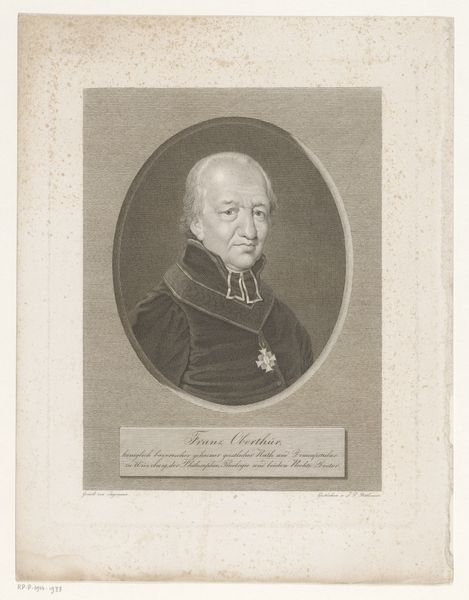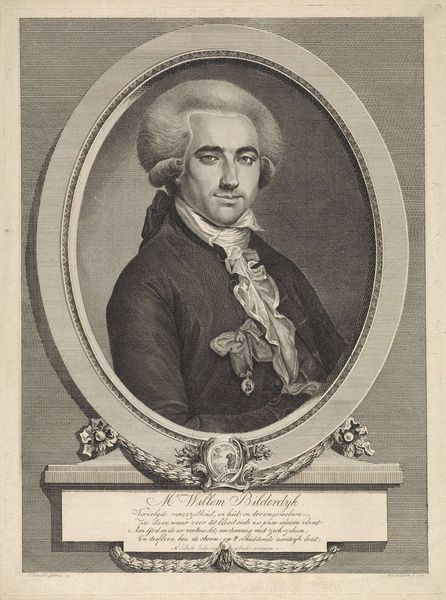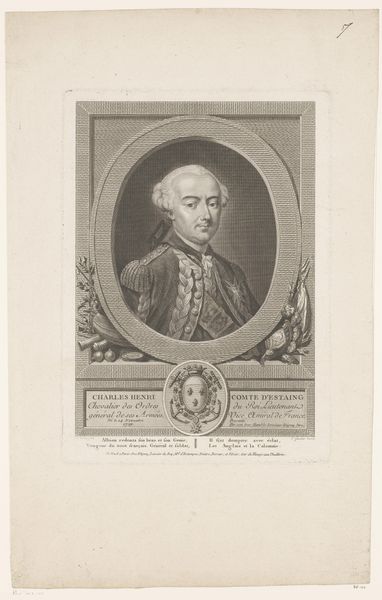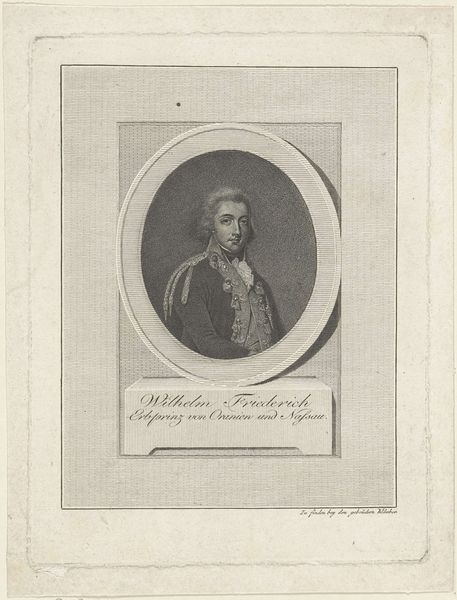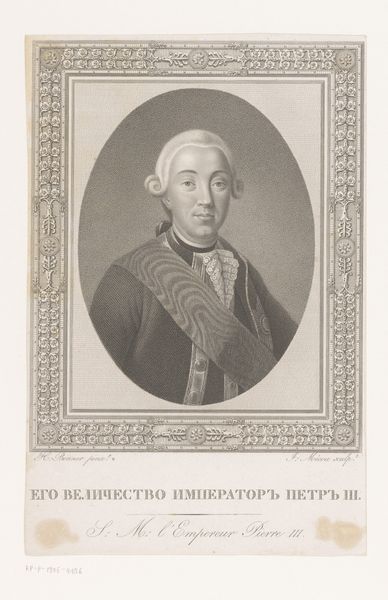
print, engraving
#
portrait
#
neoclacissism
# print
#
old engraving style
#
historical photography
#
history-painting
#
engraving
Dimensions: height 101 mm, width 65 mm
Copyright: Rijks Museum: Open Domain
Editor: Here we have a print titled "Portret van August Ferdinand van Pruisen," dating somewhere between 1762 and 1813, by Meno Haas. The texture is very fine, with closely laid lines defining shape and form. What stands out to you about its composition and execution? Curator: I'm particularly interested in the artist's use of line and value to articulate form. Note the precision and detail achieved within the oval format of the portrait, a frame that emphasizes both the subject's contained nobility, and the meticulous rendering of fabric, hair, and the suggestion of skin texture using only the language of the engraver's tool. It begs the question: How do these formal elements support or complicate our understanding of the sitter? Editor: That's a good point. How does the artist create depth and volume with such a limited palette? Is it all hatching and cross-hatching? Curator: Precisely. Observe the modulation of light across the prince's face, achieved solely through varying densities of line. See how Haas uses subtle gradations of tone, avoiding pure blacks or whites to render the textures and the play of light, achieving a nuanced realism that elevates the medium. Do you notice the gaze? Editor: Yes! His direct gaze, though subtly rendered, definitely commands attention and creates a sense of engagement. Curator: Indeed. How does it contribute to the overall composition and character? How does it relate to the geometric exactitude we also observe? Editor: This was really enlightening. I initially saw a simple portrait, but now I see layers of complexity in its technique and expression! Curator: Indeed. By appreciating how form constitutes the foundation of expression, we learn to read, not merely look at, art.
Comments
No comments
Be the first to comment and join the conversation on the ultimate creative platform.
